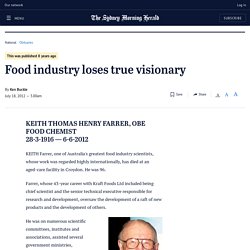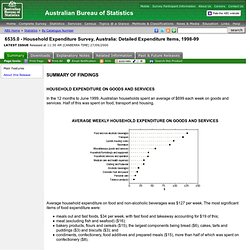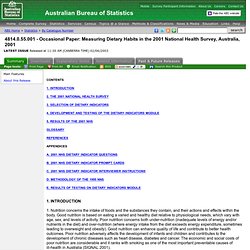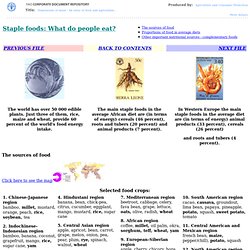

The world's most revolting cakes - in pictures. Food industry loses true visionary. Farrer went on to study chemistry and metallurgy at Melbourne University and graduated as BSc in 1936 and MSc (chemistry) in 1938.

There was no provision for doctoral studies in Australia at the time, so his DSc (1954) was awarded for his outstanding endeavour in many fields, particularly his ground-breaking work in discovering a chemical method for determining vitamin B1, which had, to that time, been limited to a biological determination. His working life began in 1938 as a research chemist with Kraft Foods in food science and technology, and he progressed to senior research chemist (1944-49), manager R&D (1949-76) and chief scientist (1976-81).
As the senior technical executive, he was responsible for all R&D and for company compliance with food regulations, scientific accuracy of advertising, and all contact with government and university laboratories. Farrer also wrote the chapter on food technology in the bicentennial book Technology in Australia: 1788-1988. From damper to dial-a-pizza - Features. Australian cuisine has come a long way since 1788, from cook to celebrity chef, tucker to dukkah.

Nutritionist Nicole Senior looks at our evolution into a modern, multicultural food nation. A Cook's journey The First Fleet arrived in Sydney in 1788 with basic food supplies, including flour, sugar, butter, rice, pork and beef, expecting to grow food when they arrived. When they landed, however, they found that the soil around Sydney Harbour was so poor they headed west to Parramatta to establish farms. They also traded their stodgy offerings for bush tucker from the local Aborigines, but the European palate didn't take to this unfamiliar fare very well and relied on food arriving by ship. Some of our early explorers, doggedly trying to stick to these ship-borne rations, actually owed their survival to the local Aboriginal people who fed them.
Gruel Brittania Mmm...meat Multicultural melting pot Need-it-now basis Cafe society The wellness revolution. 6535.0 - Household Expenditure Survey, Australia: Detailed Expenditure Items, 1998-99. In the 12 months to June 1999, Australian households spent an average of $699 each week on goods and services.

Half of this was spent on food, transport and housing. Average household expenditure on food and non-alcoholic beverages was $127 per week. The most significant items of food expenditure were: meals out and fast foods, $34 per week, with fast food and takeaway accounting for $19 of this; meat (excluding fish and seafood) ($16); bakery products, flours and cereals ($15), the largest components being bread ($6), cakes, tarts and puddings ($3) and biscuits ($3); and condiments, confectionery, food additives and prepared meals ($15), more than half of which was spent on confectionery ($8).AVERAGE WEEKLY HOUSEHOLD EXPENDITURE ON FOOD AND NON-ALCOHOLIC BEVERAGES Expenditure on transport amounted to $118 per week.
Current housing costs amounted to $97 per week. Household spending on recreation averaged $89 per week. 4 The 1998-99 HES is similar to the 1993-94 survey. Households Income. 4814.0.55.001 - Occasional Paper: Measuring Dietary Habits in the 2001 National Health Survey, Australia, 2001. 1.

Nutrition concerns the intake of foods and the substances they contain, and their actions and effects within the body. Good nutrition is based on eating a varied and healthy diet relative to physiological needs, which vary with age, sex, and levels of activity. Www.tasa.org.au/conferences/conferencepapers09/papers/Makenoglou, Anna.pdf. Generation why: food - ABC South West WA - Australian Broadcasting Corporation. Aboriginal Cultural and Education Centre. Dimensions of need - Staple foods: What do people eat? The sources of food Click here to see the map A staple food is one that is eaten regularly and in such quantities as to constitute the dominant part of the diet and supply a major proportion of energy and nutrient needs.

A staple food does not meet a population's total nutritional needs: a variety of foods is required. This is particularly the case for children and other nutritionally vulnerable groups. Typically, staple foods are well adapted to the growth conditions in their source areas. Most people live on a diet based on one or more of the following staples: rice, wheat, maize (corn), millet, sorghum, roots and tubers (potatoes, cassava, yams and taro), and animal products such as meat, milk, eggs, cheese and fish. Of more than 50 000 edible plant species in the world, only a few hundred contribute significantly to food supplies.
Although there are over 10 000 species in the Gramineae (cereal) family, few have been widely introduced into cultivation over the past 2 000 years. Staple foods around the world. Foodbank - An Australia Without Hunger. Homepage. Homepage. Food Timeline: food history & vintage recipes. Rising food prices threaten poverty increase - Australia Network's Newsline. Food Blog Design. Marcel Dicke: Why not eat insects? Carolyn Steel: How food shapes our cities. Birke Baehr: What's wrong with our food system. What The World Eats. Fabulous Food Of Malaysia.